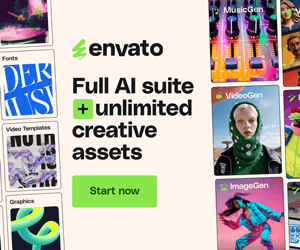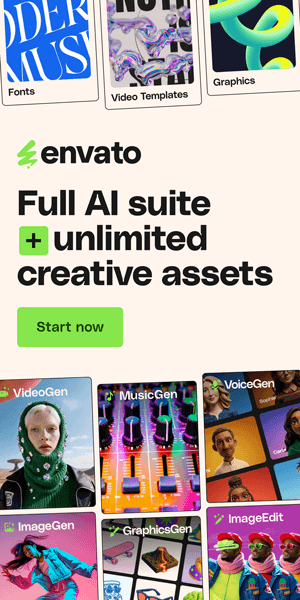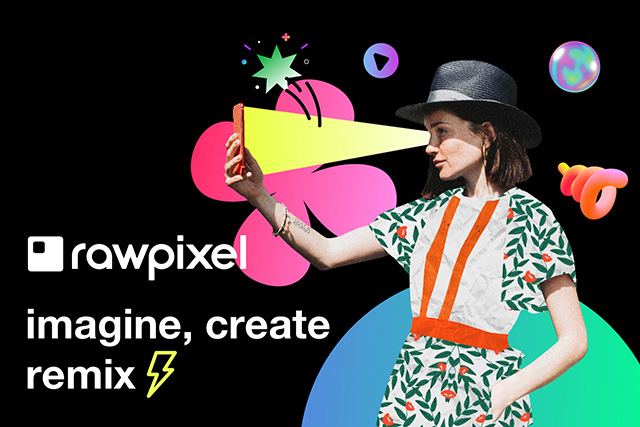Pushing Typography Boundaries: The Art of Experimental Fonts
In the world of graphic design, fonts play a pivotal role in conveying messages, evoking emotions, and making a lasting impression. The art of experimental fonts is a creative journey that challenges conventional typography norms and dares to explore the uncharted territories of design. In this post, we'll provide an all-encompassing rundown of experimental fonts, including an explanation of why they matter, how to use them effectively, and inspiring examples that demonstrate their impact.
Experimental fonts are not limited to a specific industry or sector; they are a versatile tool for any designer looking to push the boundaries of creativity. Whether you're a seasoned graphic designer or just getting started in the world of design, understanding the power of experimental fonts can elevate your work to new heights.
Now, let's dive into the exciting world of experimental fonts and discover how they can revolutionize your design projects.
What is Experimental Typography (and Why Does it Matter)?
Experimental typography is a cutting-edge and avant-garde approach to typography within the realm of graphic design. It involves pushing the boundaries of traditional type design by exploring new, unconventional, and innovative ways to communicate through text.
In essence, experimental typography can be defined as the creative manipulation of type, where designers deviate from conventional fonts, layouts, and design principles to convey messages in unique and visually striking ways. This could encompass using irregular letterforms, incorporating multimedia elements, experimenting with spatial arrangements, or even utilizing interactive technology to redefine how text is presented.
Now, let's dive into why experimental typography matters in the world of graphic design.
1. Uniqueness and Innovation
Experimental typography allows designers to break away from the mundane, offering fresh and unexpected ways to convey messages. In a competitive design landscape, being able to stand out is crucial for both individual designers and businesses.
2. Visual Impact
The innovative use of type can create powerful visual impact, making a message more memorable and engaging. It can capture viewers' attention, conveying emotions and narratives more effectively.
3. Storytelling
Typography is a storytelling tool. Experimental typography can be used to reinforce the narrative, mood, or context of a piece. This is especially valuable in advertising and branding.
4. Flexibility
In a digital world, where design mediums constantly evolve, experimental typography adapts to the changing landscape. It can seamlessly incorporate technologies like AR, VR, and interactive elements, opening up new possibilities for communication.
5. Personal Expression
For designers, it's a means of personal expression and a way to showcase their skills and creativity. It allows them to push boundaries and break free from design constraints.
6. Effective Communication
When used purposefully, experimental typography can enhance clarity and understanding. It's not just about aesthetics; it's about conveying messages in the most effective and compelling way.
In summary, experimental typography is about breaking the mold, embracing innovation, and redefining how we communicate through text. It matters because it enables designers and businesses to differentiate themselves, captivate their audience, and effectively convey their messages in an ever-evolving design landscape. It's a gateway to creativity, uniqueness, and effective communication in the visual world.
The History of Experimental Typography
Experimental typography is a captivating journey through the art of letters and design, and its evolution from its early beginnings to today is a story worth delving into.
In the world of typography, the art of arranging and designing text, experimental typography stands as a bold and creative outlier. It pushes the boundaries of what we traditionally perceive as fonts and typefaces, embracing innovation and the avant-garde. To understand its history, we must go back to the roots of typography itself.
The origins of experimental typography can be traced to the early days of movable type printing, when Johannes Gutenberg revolutionized the written word with the invention of the printing press in the 15th century. However, it wasn't until the 20th century that typography began to break free from its conventional constraints.
One of the pioneers of experimental typography was the Bauhaus school in Germany, founded in 1919. Artists and designers like Herbert Bayer and László Moholy-Nagy at the Bauhaus experimented with abstract forms, geometric shapes, and asymmetric layouts in their typographic designs. This marked a significant departure from the conventional serif and sans-serif fonts of the time.
In the mid-20th century, the Swiss Style, or International Typographic Style, emerged as a dominant force in experimental typography. Designers like Max Miedinger, who created the iconic Helvetica font, embraced simplicity, clean lines, and a focus on readability.
The digital age further fueled the evolution of experimental typography. With the advent of computers and design software, designers gained unprecedented creative freedom. They could explore 3D text, animations, and unconventional arrangements, giving rise to a new era of typographic experimentation.
Today, experimental typography continues to evolve, thanks to the fusion of technology, art, and design. Designers are combining traditional and digital techniques to create fonts that challenge our understanding of legibility and aesthetics. From kinetic typography in movie titles to interactive web design, experimental typography is at the forefront of modern design.
In conclusion, the history of experimental typography is a fascinating journey that has taken us from the Gutenberg press to the digital age. It has constantly pushed the boundaries of what we thought possible with letters and words, and its evolution continues to shape the visual language of our world. So, the next time you see a bold, unconventional font that makes you stop and think, remember that it's all part of the rich history of experimental typography.
Terms to Know
When delving into the world of experimental typography, it's essential to grasp some key terms that will help you navigate this creative terrain. Here are a few terms to get you started:
1. Kerning
Kerning refers to the adjustment of the space between individual characters or letters in a font. It's a crucial aspect of typography, as proper kerning ensures that the text appears visually pleasing and readable.
2. Serif and Sans-serif
These terms are often mentioned in the world of typography. Serif fonts have decorative lines or extensions at the ends of their characters, while sans-serif fonts are clean and lack these embellishments. Understanding these distinctions is fundamental in typography.
3. Bauhaus
The Bauhaus school, founded in Germany in 1919, was a pioneering institution that greatly influenced experimental typography. It emphasized the fusion of art, craft, and technology and encouraged innovative approaches to design.
4. Swiss Style (International Typographic Style)
The Swiss Style is a design movement that emerged in the mid-20th century, characterized by clean, minimalistic design, grid systems, and an emphasis on readability. It played a significant role in shaping modern typography.
5. Kinetic Typography
Kinetic typography involves the animation of text, making it visually dynamic. It's often used in video, film, and digital media to enhance the impact of textual content. Think of movie titles that come to life with moving letters.
6. Typeface vs. Font
These terms are sometimes used interchangeably, but they have distinct meanings. A typeface is the design of a set of characters, while a font is a specific style and size of that typeface. For example, Arial is a typeface, and Arial Bold in 12-point is a font.
7. Experimental Fonts
Experimental fonts are typefaces that challenge traditional typographic norms. They can feature unconventional shapes, irregular letterforms, or unique artistic elements, making them a playground for creativity in typography.
The Pros and Cons of Using Experimental Fonts
Using experimental fonts in design is like adding a pinch of creative spice to your project. It can be a game-changer, but it also comes with its own set of pros and cons. Let's dive into this typography adventure.
Pros of Using Experimental Fonts
1. Uniqueness and Originality
Experimental fonts can set your design apart from the crowd. They often have distinctive, unconventional styles that make your content memorable and unique.
2. Creative Expression
These fonts are a canvas for creative expression. Designers can play with form, texture, and artistic elements, allowing for a more profound connection between the message and the audience.
3. Visual Impact
When used thoughtfully, experimental fonts can have a powerful visual impact. They can evoke emotions and engage viewers, making your message more compelling.
4. Versatility
Experimental fonts aren't limited to a specific style or industry. They can be used across a wide range of design projects, from posters and advertisements to websites and branding.
5. Breaking Norms
Sometimes, breaking the typographic norms is precisely what a project needs to make a statement or challenge conventions. Experimental fonts offer the opportunity to do just that.
Cons of Using Experimental Fonts
1. Legibility Challenges
Many experimental fonts prioritize style over readability. If not used carefully, they can make your content difficult to read, which defeats the purpose of communication.
2. Inconsistent Branding
For businesses, maintaining a consistent brand image is crucial. Using experimental fonts can sometimes clash with established branding, creating confusion.
3. Overuse
While experimental fonts are exciting, it's easy to overdo it. Using them in excess can overwhelm the viewer and dilute the impact.
4. Time-Consuming
Designing with experimental fonts often requires more time and effort. Customizing or integrating them seamlessly into a project can be a complex task.
5. Limited Applicability
Some experimental fonts are highly specialized and may not be suitable for all types of content. They might work wonderfully for a poster but not for a lengthy document.
In summary, the use of experimental fonts in design is a double-edged sword. It can elevate your project to new creative heights and captivate your audience, but it also comes with risks. The key is to strike a balance between creativity and practicality, ensuring that the experimental font enhances your message without overshadowing it. It's an art, and like all art, it requires a discerning eye and a thoughtful approach.
Examples of Experimental Typography
Exploring real-world examples of experimental typography in design is like taking a tour through the vibrant spectrum of creative possibilities. Here are five outstanding instances that demonstrate the captivating power of experimental fonts:
1. The Mast Brothers Chocolate Packaging
Mast Brothers, a renowned artisanal chocolate maker, uses experimental fonts on their packaging. With a rustic, handcrafted feel, their fonts evoke a sense of tradition and quality, setting them apart from the typical sleek and modern designs in the industry.
2. Frank Rausch's Poster Design
Frank Rausch, a German designer, is known for his captivating poster designs. He often employs experimental typography to convey his message. In one striking example, he uses distorted and fragmented letters to create a sense of urgency and chaos, aligning perfectly with the message of the poster.
3. Experimental Typography in Music Album Covers
Numerous musicians and bands have embraced experimental fonts for their album artwork. Bands like Radiohead have used glitchy, distorted text to complement their music's avant-garde nature, setting a tone that extends beyond the music itself.
4. Lance Wyman's Olympic Logo Design
In the 1968 Mexico City Olympics, Lance Wyman's logo design was groundbreaking. It incorporated experimental typography with clean, bold lines and geometric shapes to represent the modernity and cultural richness of Mexico.
5. Experimental Fonts in Movie Titles:
Movie titles often feature experimental typography to set the tone for the film. Think of the iconic opening credits of "Stranger Things," which use a glowing, retro futuristic font to transport viewers to the 1980s.
6. Branding for Cultural Events
Cultural events often employ experimental fonts to capture the essence of their themes. Designers for events like art exhibitions and music festivals use fonts that mirror the event's spirit, creating a seamless visual experience for attendees.
7. Interactive Websites
In web design, experimental fonts play a crucial role in creating engaging user experiences. Websites like "Lost Worlds Fairs" use dynamic, interactive fonts that respond to user actions, adding an extra layer of engagement.
8. Typography in Food Packaging
Unique, experimental fonts can be found on food packaging. Brands like Kettle Brand Chips use fonts that reflect the artisanal, handcrafted nature of their products, emphasizing the premium quality.
9. Fashion Brand Logos
High-end fashion brands often incorporate experimental fonts into their logos to convey exclusivity and style. The use of cursive, calligraphic, or even abstract fonts can elevate a brand's image.
10. Book Covers
In the world of book cover design, experimental typography can be a powerful tool. Designers create covers that not only reflect the book's content but also make it stand out on the shelves.
These examples showcase how experimental fonts can be harnessed to convey messages, emotions, and themes in various design contexts. When used effectively, they have the potential to transform a design into a work of art that resonates with the audience on a deeper level.
How to Use Experimental Fonts
Using experimental fonts in your design projects can breathe new life into your work, but it's crucial to do it thoughtfully. Here's a step-by-step guide to help you integrate experimental fonts effectively:
Step 1: Define Your Design Objective
Before you dive into experimental fonts, be clear about your project's objective. Understand the message you want to convey, the audience you're targeting, and the emotions or themes you aim to evoke. This clarity will guide your font selection.
Step 2: Choose the Right Font
Select an experimental font that aligns with your design objectives. Consider factors like legibility, mood, and style. Experiment with different options until you find the one that complements your project best.
Step 3: Balance Legibility and Creativity
Experimental fonts can be intricate and artistic, but don't sacrifice legibility for style. Ensure that your chosen font is readable, especially for longer pieces of text. Adjust the font size and spacing as needed.
Step 4: Mix and Match
Don't limit yourself to a single font. Experiment with font pairings. Combining an experimental font for headlines with a more traditional, readable font for body text can create a balanced and visually appealing design.
Step 5: Use Typography Hierarchy
Establish a hierarchy in your typography. Headlines, subheadings, body text, and captions should be differentiated in terms of font size, weight, and style. This hierarchy guides the reader through your content.
Step 6: Spacing and Alignment
Pay attention to the spacing and alignment of your text. Experiment with line spacing, kerning, and tracking to create visual harmony. Justified or left-aligned text can influence the flow of your content.
Step 7: Embrace Negative Space
Whitespace is your friend. Allow your experimental fonts room to breathe. Give them adequate spacing from other design elements, creating a clean and uncluttered look.
Step 8: Test Across Platforms
Check how your experimental fonts appear across various platforms and devices. Ensure they display consistently and are legible on both desktop and mobile.
Step 9: Context Matters
Consider the context of your design. Experimental fonts that work for a music festival poster might not be suitable for a financial report. Tailor your font choices to the content and context.
Step 10: Seek Feedback
Finally, don't work in isolation. Share your design with colleagues or peers for feedback. They can provide valuable insights and help you refine your use of experimental fonts.
Remember, experimental fonts can be a powerful tool for creativity, but they should always serve the purpose of your design. When used thoughtfully and strategically, they can elevate your projects and create a lasting impact on your audience.
Conclusion
As we conclude this exploration of experimental fonts, remember that typography is an art form that constantly evolves. By embracing experimental fonts, you can break free from the constraints of traditional design and embark on a creative journey that knows no bounds. Experiment, learn, and create to unleash your full design potential.
Don't forget to check out our other resources on typography and design on our website, and stay tuned for more design inspiration.
You May Also Like




Tags
Subscribe
Join the Advise Graphics community and get exclusive design resources, tips, and updates delivered straight to your inbox.
Quick links
Copyright
© 2025 Advise Graphics. All rights reserved.
Cop© 2025 Advise Graphics. All rights reserved.









